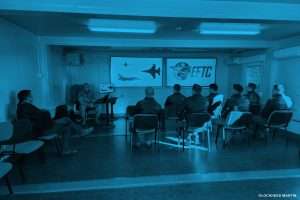
Reading Deloitte’s recent Defense Outlook for 2017, the Aerospace & Defense (A&D) industry has been experiencing a strong growth. This growth is a result of both technology breakthroughs and increasing defense budgets globally.
Working closely with Armed Forces and Defense industries, we experienced firsthand their strategic and operational challenges. This has provided us with interesting opportunities for further development of the ILIAS Defense Platform as a best-in-class managerial instrument.
Here’s our pick of what will be some of the hot topics for 2017.
ALL ABOUT THE (BIG) DATA
More than ever, data analysis is becoming more instrumental for MoD’s and OEM’s for management and better performance. Like in every industry, big data is continuing to go on its merry way. A&D stakeholders will look for better insight, detailed analysis and increased effectiveness through data exploration.
A fine example is our Defense Capability Management solution that exploits the data to enables organizations to create a model of how it works, monitor its performance according to this model and manage the improvements in the way it works.
We assume that current big data R&D projects are just the start of what will be a crucial topic for the defense industry in the upcoming years.
PREDICTIVE MAINTENANCE
Optimizing fleet availability, while minimizing maintenance costs, has become quintessential in the current economic and security conditions. Against this backdrop, implementing predictive maintenance is a smart concept to improve performance.
Predictive maintenance is a most inspiring challenge for ILIAS, which we reported on a few months ago (see article here). During the last year, we noticed an increasing interest for predictive maintenance and Health and Usage Monitoring Systems (HUMS) by the industry, but also MoD’s. It is expected that this interest will only grow and will make predictive maintenance one of the hot topics for 2017.
DEFENSE TAILORED SOFTWARE
Many MoD’s have been struggling with developing bespoke systems and adapting standard commercial products to military requirements.
These programs have proven to be (too) high risk. Decades of investments have led to mediocre or ultimately no results. Hence MoD’s suffer a double loss; invested budgets are lost and secondly the non-performing solutions result in higher operational expenditure and lower capability.
System implementations are about organizational change and business improvement. Unfortunately when introducing a non-fit software at the start, these programs deteriorate to ICT projects with man-years of development, resulting in a legacy of systems with a high maintenance cost and an unjustified Total Cost of Ownership.
One of the risk is the pitfall of the status quo. Organizations are change aversive. Introducing best-practice systems challenges the organization to change for better performance. Developing systems however often leads to the re-implementation and institutionalizing of the current way of working. A lost opportunity at a high cost.
Leadership will come to the conclusion that the introduction of a defense-focused solution – that is truly covering the full value chain – directly contributes to fleet effectiveness while lowering Total Cost of Ownership.
Don’t hesitate to download our 2017 Defense Trends infographic:



